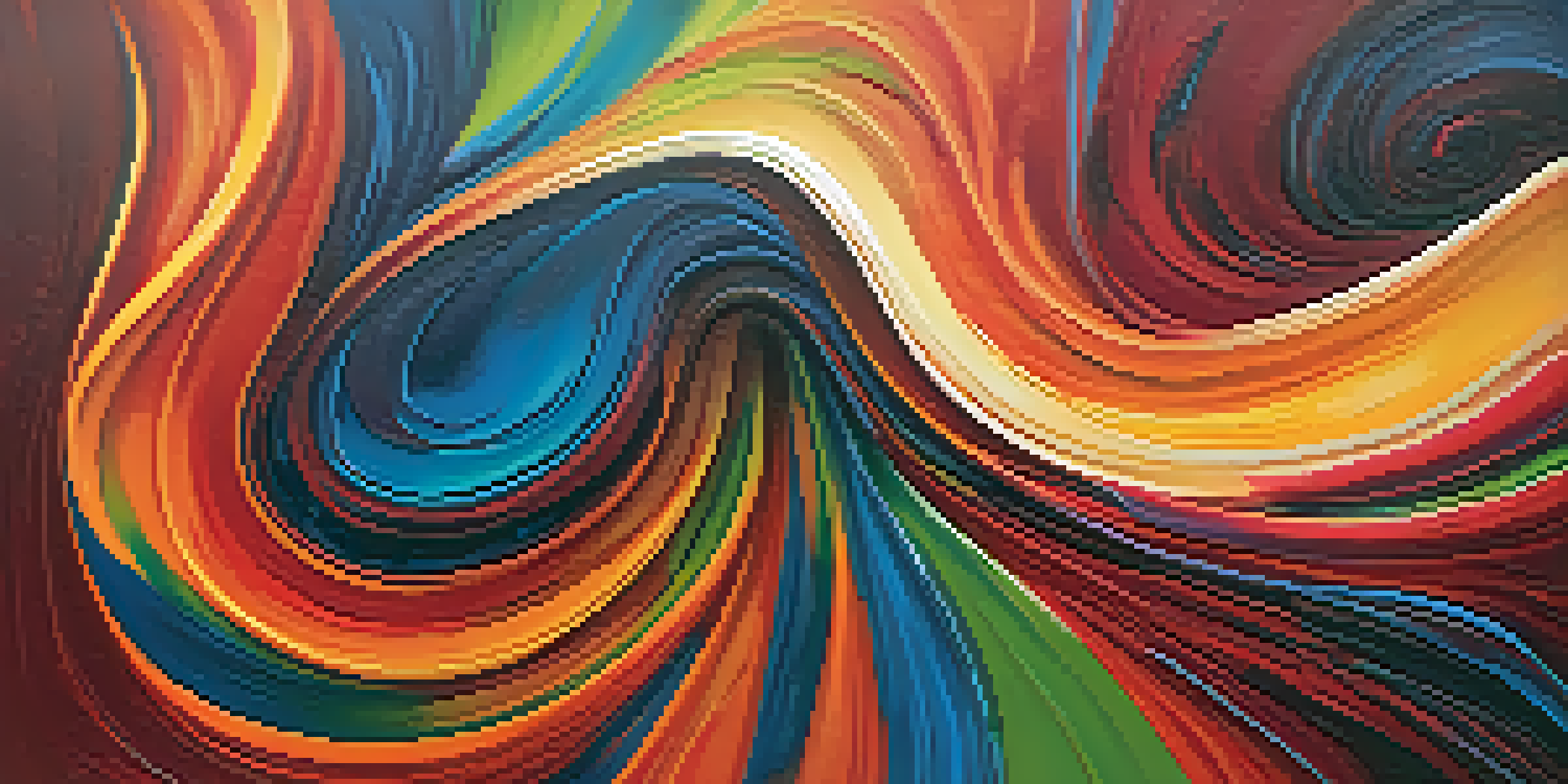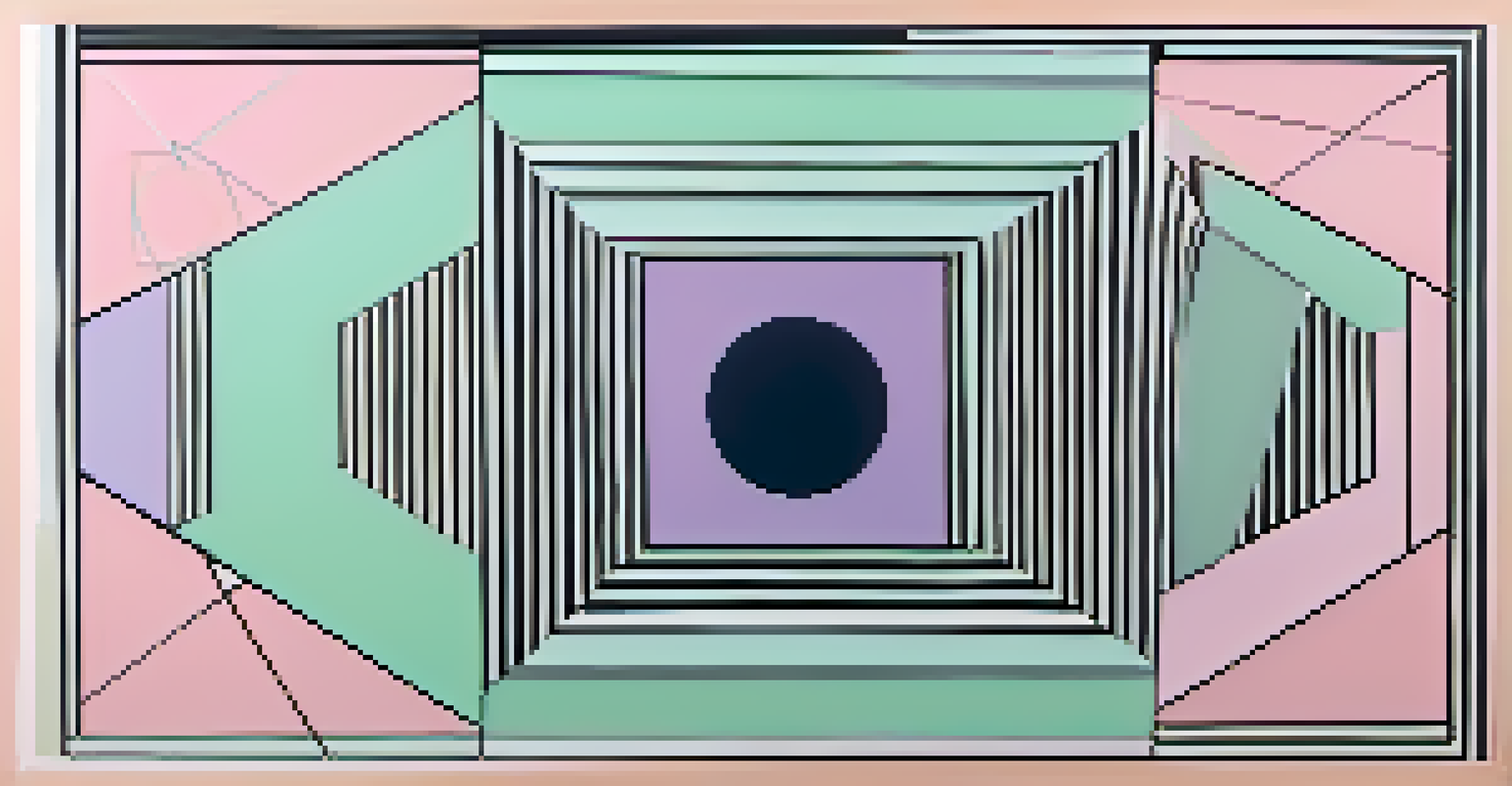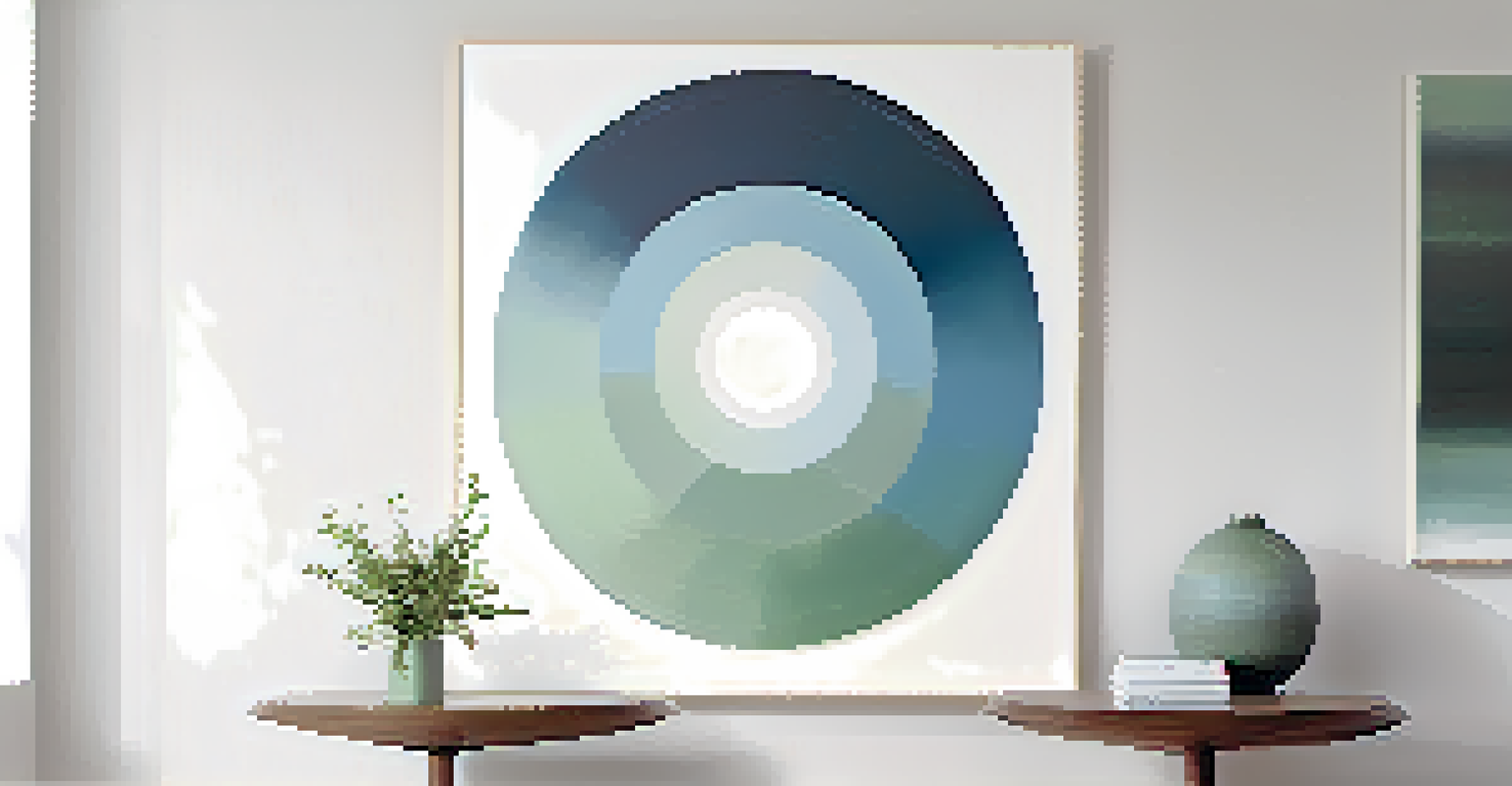Interpreting Abstract Art: Finding Meaning Beyond the Obvious

What is Abstract Art? Breaking Down the Basics
Abstract art is a genre that moves away from traditional representation. Instead of depicting objects or scenes realistically, it focuses on colors, shapes, and forms to express emotions and ideas. This can sometimes make it feel confusing, but that's part of its beauty.
Art is not what you see, but what you make others see.
By stripping away recognizable subjects, abstract art invites viewers to engage with the piece on a more personal level. It encourages us to rely on our emotions and experiences rather than our intellect. This shift from the literal to the emotional is what makes abstract art so profoundly impactful.
So, whether you're staring at a splash of color or an intricate geometric design, remember that each piece has its own unique story to tell. Your interpretation can be just as valid as anyone else's, revealing the deeply personal connections we have with art.
The Role of Emotion in Abstract Art Interpretation
One of the most fascinating aspects of abstract art is its emotional resonance. The colors and shapes chosen by the artist can evoke feelings ranging from joy to melancholy. For example, a bold red might inspire passion, while soft blues can evoke calmness.

When interpreting abstract art, it's essential to pay attention to how the piece makes you feel. Your emotional response can guide you toward a deeper understanding of the artwork. It’s like listening to a song that resonates with your mood; the connection is often immediate and powerful.
Abstract Art Invites Personal Engagement
By focusing on colors and forms rather than realistic representations, abstract art encourages viewers to connect emotionally and interpret pieces based on their personal experiences.
This intrinsic emotional connection highlights the subjective nature of art interpretation. Two viewers can stand before the same piece and walk away with entirely different experiences, each equally valid. Embrace your feelings and let them lead the way as you explore the art.
Context Matters: The Artist's Intent and Background
To truly grasp the meaning behind an abstract piece, it helps to know a bit about the artist and their intentions. Many artists draw from personal experiences, societal issues, or historical contexts when creating their work. Understanding this backdrop can enrich your interpretation.
The painter tries to master colors, to make them tell what he wants, to make them express what he feels.
For instance, if you learn that an artist created a piece during a turbulent time in their life, the chaotic brushstrokes may take on new significance. They transform from mere aesthetics into a representation of struggle or triumph. This context allows viewers to connect the dots and see the bigger picture.
Additionally, exploring an artist's body of work can reveal recurring themes or techniques that enhance your understanding of individual pieces. It’s like reading an author’s collection of stories; the more you know about their style, the richer your experience becomes.
Exploring Color Theory in Abstract Art
Color plays a crucial role in abstract art, often serving as a primary means of communication. Artists carefully select colors to convey specific emotions or ideas. For instance, vibrant yellows might evoke happiness, while darker shades could suggest despair or introspection.
Understanding basic color theory can significantly enhance your interpretation of abstract art. Complementary colors create tension, while analogous colors offer harmony. By recognizing these relationships, you can uncover layers of meaning that may not be immediately apparent.
Context Enhances Art Interpretation
Understanding the artist's background and intentions can provide deeper insights into the meaning behind abstract pieces, enriching the viewer's overall experience.
As you engage with a piece, consider what emotions the colors evoke for you personally. This subjective experience adds another dimension to your interpretation, making it uniquely yours. So, don’t shy away from exploring how color influences your perception of the artwork.
The Importance of Personal Experience in Interpretation
Your personal experiences shape how you interpret abstract art. The memories, emotions, and events that define your life can influence what you see when you look at a piece. This makes each viewer's experience as unique as a fingerprint.
For example, if you have a cherished memory associated with a certain color or shape, it may automatically color your interpretation of an abstract piece that features those elements. This connection allows you to engage with the artwork on a deeper level, transforming a simple viewing into an emotional journey.
Recognizing this interplay between art and personal experience can be empowering. It reminds us that there are no right or wrong interpretations, only individual perspectives. Embrace your story as you explore abstract art, and let it guide your understanding.
Techniques to Enhance Your Abstract Art Interpretation Skills
Improving your interpretation skills takes practice, but there are simple techniques you can use. Start by spending time with a piece, allowing your thoughts and feelings to flow without judgment. Jot down your initial impressions and see how your understanding evolves over time.
Another helpful approach is to discuss the artwork with others. Engaging in conversations about your interpretations can reveal insights you might not have considered. It’s like sharing a favorite book and discovering new themes together; collaboration often leads to richer understanding.
Your Emotions Shape Art Perception
Each viewer's unique life experiences influence their interpretation of abstract art, making personal connections a vital aspect of the viewing process.
Lastly, consider visiting galleries or museums with a focus on abstract art. Surrounding yourself with various pieces and styles can broaden your perspective and inspire new ways of thinking. The more you expose yourself to abstract art, the more confident you’ll become in your interpretations.
Conclusion: Embracing the Journey of Interpretation
Interpreting abstract art is a journey, not a destination. Each piece invites you to explore your emotions, thoughts, and experiences, helping you uncover hidden meanings. This process can be deeply rewarding and often reveals aspects of yourself you might not have known.
As you engage with abstract art, remember that your interpretation is valid, even if it differs from others. Embrace the subjectivity of art and allow it to spark meaningful conversations and reflections. The beauty of abstract art lies in its ability to resonate differently with each viewer.

Ultimately, the goal is to enjoy the experience and let it enrich your understanding of art and yourself. So next time you find yourself in front of an abstract piece, take a moment to reflect, feel, and discover the myriad layers of meaning waiting to be uncovered.